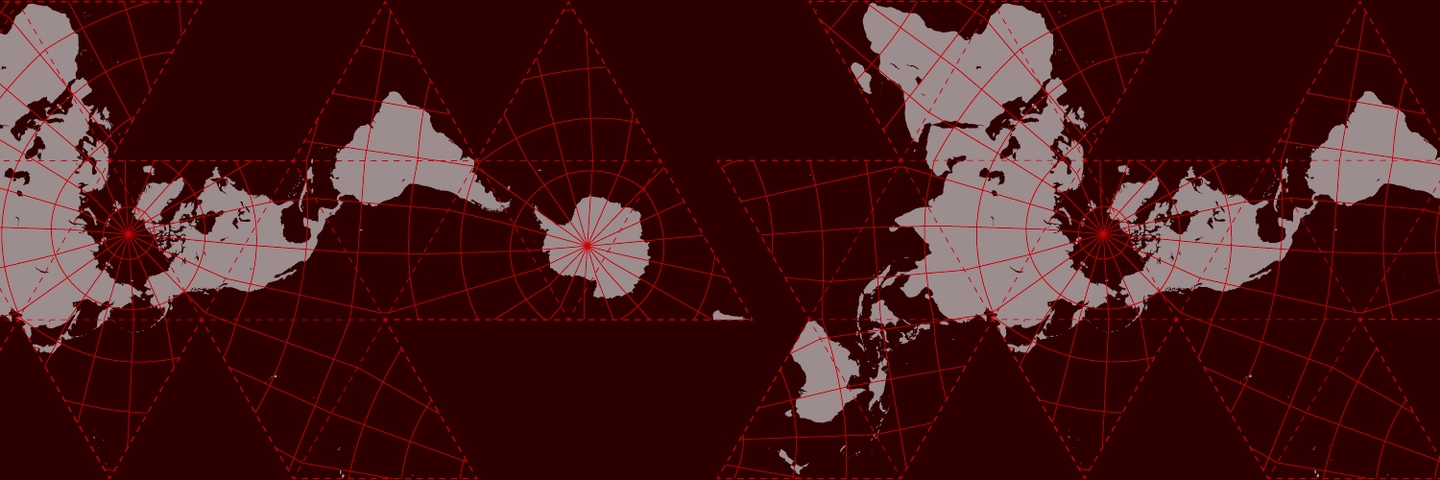
One of the key factors that contributes to global political, social, and economic inequality is the lack of adequate scientific and technological resources in the Global South. A desideratum for a coherent program for a New International Economic Order is to end the Global South’s scientific and technological dependency on the Global North. The end of the unipolar era brings with it opportunities for many countries in the Global South to improve their bargaining position in a manner that would enable them to take substantial steps towards ending scientific and technological dependency.
However, these opportunities require internal reconfigurations, and the rebuilding of a reconstituted developmental state in countries in the Global South. It is clear that the ability of the U.S. to enforce its will on at least some of its international allies has declined, as evidenced by, for instance, the unwillingness of Saudi Arabia to agree to an increase in oil production as requested by the U.S.1 States which have been historically aligned with the U.S. in the Global South are now taking into consideration the rise of China as a world economic power, as well as Russia’s more belligerent attitude towards what it perceives to be American encroachment on areas of vital strategic importance to it.2 The question arises: given the current historical juncture, what are the opportunities which this new international environment presents for thinking about how to end the Global South’s scientific and technological dependency on the Global North?
COVD-19 and the Challenges Posed by Scientific and Technological Dependency
The saliency of the problem of scientific and technological dependency has been amplified during the COVID-19 pandemic, which showed that the lack of autonomous, effective scientific research institutions (along with manufacturing capacity) in many countries in the Global South rendered them totally dependent on the Global North. African countries import 99% of the vaccines that they employ.3 The entire continent only has ten vaccine manufacturers, of which only five can manufacture the substances out of which the vaccines are made (located in Egypt, Morocco, Senegal, South Africa, and Tunisia), the rest are just “finishing plants”.4 The result of this lack of scientific, technological, and industrial capacity is that by April 2021, 87% of global vaccine stocks had gone to high income countries, and the poorest countries – especially poor African countries – had to wait their turn. In this moment of crisis, it has become clear that dependency on the goodwill of the Global North is utterly irrational in the long run.
One positive outcome of this crisis is that it has pushed many African leaders to admit that without greater emphasis on vaccine manufacturing at home, African responses to pandemics will remain inadequate. Hence, political leaders are now explicitly discussing the need to create more manufacturing plants on the African continent.5 On April 13, 2021. African leaders announced a plan to manufacture 60% of the vaccines used in Africa by 2040.6 To actualize this plan would require greater cooperation both among different African countries, and between African countries and other countries in the Global South with well-developed vaccine manufacturing capacities, such as India and Cuba. It would also necessitate radical changes to the structure and enforcement of intellectual property law, which buttresses the position of primarily Northern-based multinational pharmaceutical companies and exerts upward pressure on the prices of necessary vaccines across the Global South. The vaccine for human papillomavirus, for instance, is sold to countries in the Global South for ten times its production cost.7
Opportunities in the Multipolar World
The end of the era of unipolarity might lead to openings for maneuvering which would allow countries in the Global South to restructure international intellectual property laws in a manner that would be more advantageous to them. The agreement that was reached in June of 2022 for a partial waiver of patent enforcement rights for COVID-19 vaccines is instructive for several reasons.8
First, it represents a watered-down version of the proposal which was initially put forward by India and South Africa within a few months of the beginning of the pandemic. It was weakened at the insistence of countries in the Global North with a well-developed pharmaceutical industry. The agreement only offers a five-year period during which poorer countries can use patents for the manufacturing and supply of vaccines without the consent of the patent holders.9 However, the agreement does not include any waivers on treatment or diagnostic tools, and it does not include non-patent barriers such as trade secrets.10 Hence, it is unlikely that it would provide scaffolding for the building up of manufacturing and research capacity in the countries that need it the most. The U.S., after initially opposing any waiver on vaccine patents, made an about-turn in May 2021. This was due to internal domestic pressure and a desire to weaken European competitors, in addition to the perception, especially in the early days of the pandemic, that the U.S. was losing the “Covid Vaccine Diplomacy War” to its new competitor on the international stage, China.11 The rise of a competitor to the U.S. which is able and willing to offer better terms to countries in the Global South will improve the bargaining position of those countries. This is true regardless of the intentions of the Communist Party of China and of how we choose to characterize contemporary China. G-7 leaders already seem to think that they must provide more favourable research and development partnership deals to African and Latin American countries if they are to compete with China’s increasing influence.12 This means that African and Latin American countries will be able to leverage this competition to build up research capacity.
Aside from the end of unipolarity, the way in which China has managed foreign direct investment to ensure that it increased the probability of developing a high-tech “indigenous technology” sector (to use the term evoked in the 1974 UN Declaration on the Establishment of a New International Economic Order), can serve as a model for other developing countries. In the 2000s, the Chinese government – having already drawn significant foreign direct investment, attracted by its huge market, cheap labour power, and relatively well-developed infrastructure in the aftermath of the reform period of the 1970s13 – shifted to emphasize the necessity of technology transfer and development of local know-how as a condition for continued access to its markets. To illustrate: In the early 2000s, foreign manufacturers of high speed railways had control over two-thirds of the Chinese market. But in 2009, the Chinese government stipulated that if those same foreign companies wished to continue to bid for projects in China, they had to form joint-ventures with state owned enterprises, in which the foreign multinationals would only hold a 49% stake, and they had to share their latest designs, as well as manufacture 70% of the systems locally.14 Having grown accustomed to access to China’s tremendously large market, and driven by competition for market shares therein, the multinationals in question could not really reject the conditions which were offered by the Chinese, especially given the fact that they were also competing with each other. While the multinationals in question balked at the prospect, and lobbied their home governments to try to influence Chinese policymaking, the allure of China’s markets was enough to get most to swallow the bitter pill. The result is that over time Chinese companies have managed to acquire the relevant core technologies, and now it is Chinese manufacturers who control most of the domestic market in high-speed railways. Of course, this is only a single example, and the conditions which obtain in China do not obtain across the Global South. However, it is plausible to believe that if countries band together in the form of a new non-aligned movement, or even non-aligned regional blocs, they can replicate conditions that are similar to the conditions that allowed China to make significant inroads in technology transfer, research capacity, and know-how.
However, it would be naïve to think that the rise of China will directly and necessarily lead to the building up of autonomous and productive research institutions in the Global South or to the restructuring of economies in a positive direction, or that it will, by itself, determine the course of development in other countries in the Global South. Internal factors, especially internal class struggles, are decisive. This is so especially because of China’s policy of non-interference in the internal affairs of countries that it lends money to. For example, China has provided massive loans to both Angola and Venezuela. Angola is the African country which has borrowed the most from China, having borrowed around $ 43 billion.15 For comparison, Venezuela under Hugo Chavez borrowed around $50 billion from China.16 Both states are heavily dependent on oil revenue, but whereas oil revenue in Angola was used to enrich a very narrow circle of the ruling elite of the country,17 in Venezuela under Chavez, it was directed towards social programs and poverty alleviation, and providing support for independent communes.18 China was willing to lend to both countries despite their opposing internal policies. To this extent, Chinese development programs can be said to be ideologically neutral. China will lend to African governments independently of whether the latter embark on projects to build self-directed economies with integrated and relatively independent scientific research institutions which can end technological dependency.

Extraversion as the Fundamental Epistemic and Economic Problem
What the rise of China will do is to provide better conditions for such endeavours, but it remains necessary to think seriously in a holistic manner about plans to, for example, end African countries’ dependence on imported vaccines. More specifically, there is no possibility for ending technological dependency without developing an adequate economic plan for intra-continental and inter-continental cooperation which will transform the poorest countries from exporters of raw materials – who frequently have to compete with one another to sell the same products on the global market – to countries with internally and regionally articulated diverse economies, which are better able to weather the storms of volatile global markets for primary commodities. After all, this vulnerability to the volatility of global markets for primary commodities, especially tropical products, was already noted in the 1974 UN Declaration on the Establishment of a New International Economic Order.19
The creation of a self-sustaining vaccine manufacturing sector on the African continent requires greater industrialization which will, in turn, require both greater integration of different economic sectors at the national level as well as regional cooperation, especially in relation to infrastructure and energy generation. It is no surprise that the five countries with relatively adequate vaccine manufacturing capacity are also among the most industrialized on the continent. While it is necessary to reconfigure the global economic order to avoid ecological catastrophe, it would be unjust to prevent the countries least responsible for anthropogenic climate change from industrializing.
More concretely, this requires the overcoming of what Beninois philosopher Paulin J. Hountondji dubbed the “extraverted” character of knowledge production in the Global South – the way that knowledge production in the Global South tends to be dictated by the demands of the Global North. This is not surprising given the fact that the funding for ostensibly collaborative projects predominantly comes from the Global North.20 The problem is that reliance on this model of “trickle down science” ends up ignoring the most pressing problems that are faced by countries in the Global South which may, for example, have radically different disease environments from countries in the Global North which dictate the agenda for “cutting edge” medical research.21 The problem cannot be resolved through seeking funding in aid from the Global North. The need for integrating scientific research with national and regional plans for development is pressing, especially given the ever-increasing interconnection between basic scientific research and technological applications. “Capacity building” – understood as a kind of human resource development project associated with aid projects – without integration into a national economic and social development plan, has essentially functioned to provide cheap highly skilled labour for labs and research projects in the Global North.22 This does not mean that opportunities to send graduate students to study in the premier universities of the Global North should be shunned, but conditions must be placed and recent reversals of brain drain from certain countries should be studied with the aim of attempting to reverse brain drain in other affected countries. For example, China has recently reversed its brain drain of graduate students who choose to stay abroad after they complete their studies. One interesting result is that return rates can be increased by a factor of 3, if the salary gap is reduced to half.23 To this extent, it is not true that countries from the Global South have to aim at matching salaries from the Global North (this is practically impossible in the near future), but they must aim for incremental increases, which should be feasible if basic scientific research is integrated with national development plans. Moreover, with respect to African countries facing problems of retaining graduate students that go abroad to study, the fact that China has surpassed the U.S. and the U.K. as a destination for African students might bode well for the future because China’s visa rules basically force graduates to return to their country of origin after completing their degree.24 We may note the exclusionary nature of this policy, but in the long run it may prove to be of great benefit to many countries which are suffering from brain drain. The decisive point is that transformations in the world system are creating opportunities for making progress against scientific and technological dependency, but these opportunities require a clear apprehension of the scale and nature of the problem, and a recognition of the internal transformations necessary for taking advantage of a multipolar world.

Zeyad el Nabolsy is a PhD candidate in Africana Studies at Cornell University.



